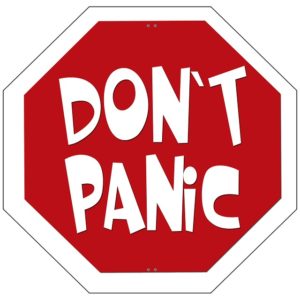Writing Strategies – Choosing a Topic
A sure-fire way to produce a look of panic on a student’s face is to tell them to get out their writing journal and write about whatever they want. Sure, there are a random few that are willing to take on this task, but more often than not, the kids will just freeze in place. But it’s not just kids that have this problem. Whether you’re planning a lesson or writing for yourself, you’ll often find that choosing a topic is the the hardest part.
Of course, there are times when you want to give your child a topic to write on. You might want an autobiography on a famous scientist or a response to a literature assignment. On the other hand, there are times when you want independent writing to take place. It’s good exercise for the brain. But how do you get them to start? Suddenly, a blank piece of paper becomes terrifying.
Some of the tips that I’ve found useful in guiding my students (and quite often myself) in choosing topics are as follows:
Keep a notebook or journal with a page or two dedicated to writing topics. If an idea pops into your head, write it down. You may find that you never use that topic (because hopefully, after awhile, you’ll have several to choose from). However, before you know it, you’ll have a list waiting for you when you’re ready to sit down and start writing.
Five minutes of free writing. My students found this method challenging at first, but after a few times, they really looked forward to doing it. The tough part of this is that your pencil cannot stop moving for the entire time. (I generally chose five minutes, but you may want to shorten this time period for younger children). The fun part is that you can write about anything you want. You should write about whatever is in your head at the time. Allow a lot of freedom in this area. I’ve seen students make lists of their friends or what they would like for lunch. They might copy words off of a poster on the wall. I did not place restrictions on this as long as the pencil kept moving. Keep this page in your writing journal for future reference.
Draw a tree. The trunk of your tree is your base. Start with the first topic that comes into your head. Begin to draw branches on your tree by adding words related to that topic. You may find out that one of your branches becomes your actual topic.
Create a waterfall. I found this especially helpful when I wanted my students to write historical fiction. The top of your waterfall is your “big” topic. For example’s sake, let’s say you are studying the Revolutionary War in history. The Revolutionary War will be the top of your waterfall. Many, many topics can rain down from your waterfall: George Washington, liberty, Delaware, the Boston Tea Party, Green Mountain Boys, etc.
Don’t be afraid to just let you child write in the moment. Sometimes it’s easier to just write. Drafts are not bad things. I write many, many drafts of articles, blog posts, etc. that never see the light of day. That’s OK. The important exercise is the practice.
These methods should keep you and your child armed with a list of ready-made topics whenever the time comes for independent writing. The more often you employ these tricks, the easier choosing a topic will become. I wish you the best of luck in your writing journeys.
Crystal Pratt is an independent contractor with Calvert Education Services. She has been involved in education for 20 years. Crystal is a certified teacher, a writer, and a lover of all things that sparkle.
